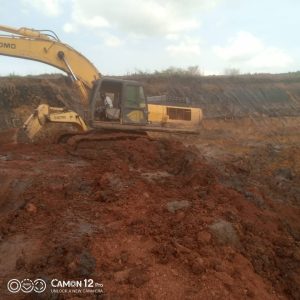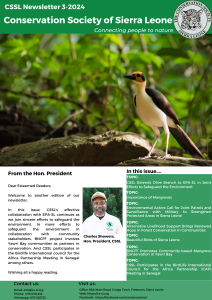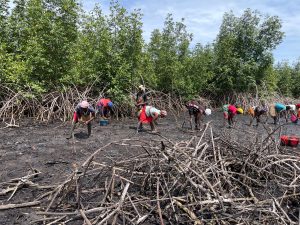With funds from the EU through IUCN, the BIOPAMA project, implemented by the Conservation Society of Sierra Leone (CSSL), is currently working with key stakeholders to address livelihood needs of forest edge communities in the Kambui Hills Forest Reserve (KHFR). This is an important component of the project that serves as an alternative means through which communities around the Gola Landscape including KHFR are expected to make a living there by reducing pressure on the forest.
The project completed the conduct of several livelihood consultative meetings for forest edge communities that are within 2km from the Reserve. The meetings, which started in February through March 2022, were held in 4 clusters of communities and served as one of the strategies adopted by the project to reduce the rate of local threats to the KHFR, as well as to gain community support through according the opportunity to communities to choose their preferred livelihood options.
A critical part of the above approach was conscientising communities to understand the relevance of embarking on lowland farming and other activities that ensure forest growth. This was to ensure the implementation of activities that are environmentally and culturally acceptable to improve the lives of forest edge communities, and at the same time, conserve the reserve. At the end of the engagements, communities were guided to select inland valley swamp (IVS) farming, upland farming (for areas without swamps), tree crops production and animal husbandry as generally accepted livelihood options to be undertaken across the project chiefdoms.
“I am very hopeful that this livelihood support, if really provided by the BIOPAMA project, will increase the protection of our forest. This is because all the many bad practices that we have doing in our forest will now stop."
Madam Kadie Fawundu from Dia community in Koya chiefdom
As a precursor to the consultative meeting, the livelihood needs assessment exercise that kick-started in November 2021, continued and ended March 2022, targeting a total of 28 forest edge communities in the 4 project chiefdoms – Niawa, Small Bo, Koya and Nongowa chiefdoms in Kenema district. This was the first stage of facilitating effective dialogue with communities in consideration of the potential threats to the KHFR. Focus group discussions were held using Participatory Rural Appraisal (PRA) methods. The results of the assessment identified some existing livelihood activities in both Kambui north and south, including farming, mining, hunting, harvesting of non-timber forest products (NTFPs) and charcoal burning/logging. Almost all of these are done within the Reserve and buffer zone where most of the communities are settled.
Find more information on our work at the Kambui Hills: project presentation BIOPAMA



